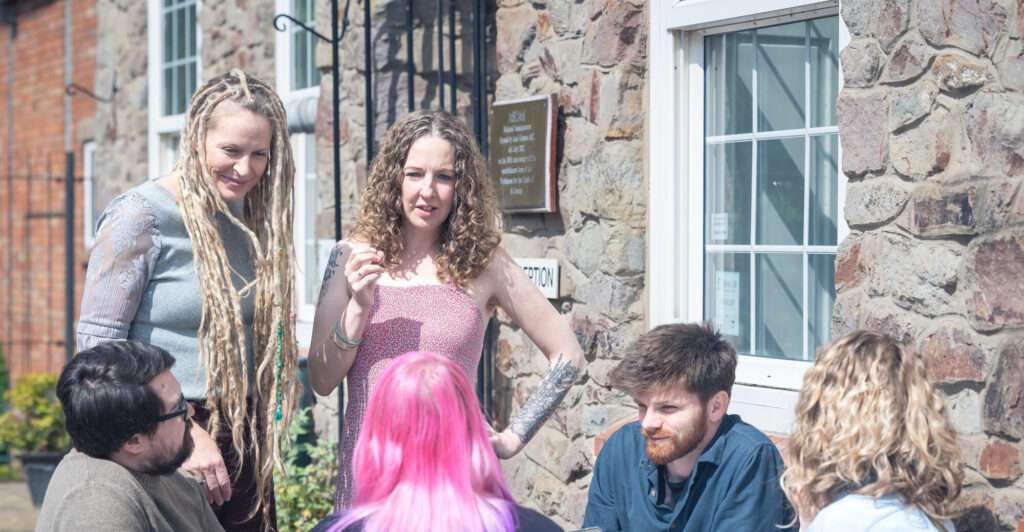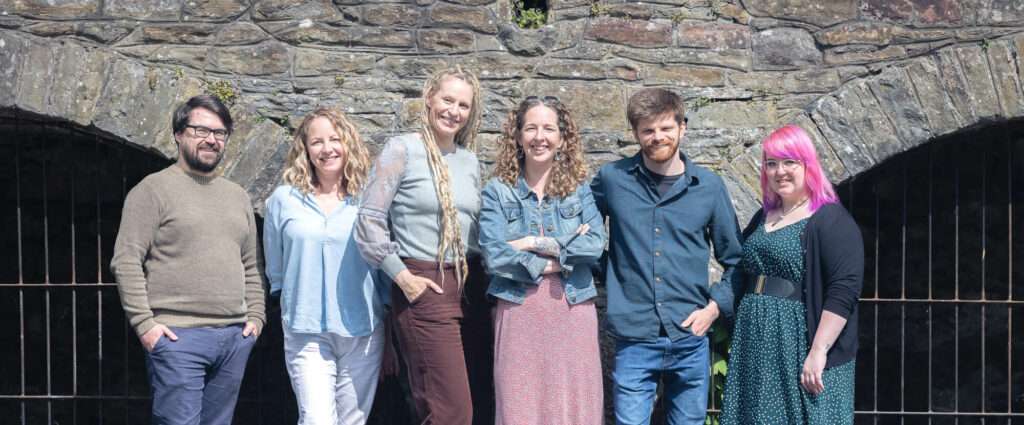

Startup to scaleup – How does brand influence investors?
This is the second article in our Brand Roundtable series, based on a conversation between experts with rich experience of creating and curating brands from startup to scaleup, and from idea to acquisition. Here they unpack the ways in which brand can influence investors.
When it comes to brand, how much do investors care about? The question might seem moot to some. Surely they’re not interested in what font you choose for your typography, or the colour palette of your product packaging – and do they really mind what brand tone of voice you use? Surely it’s all about having good CAC, LTV and burn rates?
Well, if you didn’t catch it already, it’s worth checking our first roundtable article on how much should brand evolve in the startup to scaleup journey? From our conversation there, it was clear that brand is about far more than visuals and marketing – once you reduce it down to the essentials, it reveals the essence, heart and potential of a company.
So yes: investors do care about brand. But how much are they influenced by it? And how can you curate your brand to reassure and resonate with them?
We put this to our virtual table of brand and startup/scaleup experts:
- Faye Lockier, global communication director at Ultraleap
- Abeed Janmohamed, M&A advisor and founder of Volando
- Nick Sturge MBE, portfolio NED and strategic adviser
- Caroline Macdonald, CEO and PR and marketing specialist at OggaDoon
- Tristan Gillen, growth marketing expert and founder of Growth Division
- Lauren (Stewart) Tack, founder and CEO of Invigorate and angel investor

Angel, VC and seed investors are looking at your brand holistically
“Brand is everything that a company wants to portray – everything they want to look, feel and sound like,” says Faye. “If you do brand well any employee, partner or customer will be able to tell your story to anyone else.”
That story is crucial in the early stages of seeking investment. In the past we’ve interviewed both angel and venture capital investors, and one thing they agree on is that the founding team doesn’t just need to have a good plan, they need a story they can buy into – even if, in the case of VCs, that’s a story backed up by financial forecasts.
Lauren, an angel investor herself, says, “Businesses attract investors when they spend time articulating a strong narrative which helps the investor understand their vision – and they resonate with the founder.”
For every way in which founders can strengthen a brand in early funding rounds, they can weaken it later on. Not all founders are a good fit for C-suite roles in a scaling company, particularly if they don’t have experience of running a larger organisation.
There’s one company Lauren’s invested in that had a particularly strong brand. It spoke to her partly through the founder’s attitude, partly through the visual experience, and partly through the core messaging.
“The business’s first product is a multi-vitamin designed to boost brain productivity. The founder has been careful about how he’s brought together science, psychology and nutritional experts into the conversation,” Lauren explains.
“The brand focuses not only on a single product to improve your health but rather a holistic approach which is represented in the brand. It encourages customers to find better mental health through a variety of approaches.”
That overarching perception is important. Investors might not care about the brand typography or the styling of a social post but they will care about the brand as a whole.
Caroline’s PR and digital marketing agency OggaDoon has helped cyber, proptech, healthtech and eco-focused companies build towards this point, and gain the right kind of recognition – including in the crowdfunding space.
“You can’t look at the brand narrowly, you’ve got to be holistic,” she says. “Whichever areas you’re not so interested in or cause you pain, you’ve got to give most attention – because investors are savvy to all of it.”

To outgrow early-stage investment, be taller than your founders
The part that the founders’ personal brand plays in the early stages of investment can’t be understated. Nick has helped take a number of startups and entrepreneurs through the first few miles of their journey, and has seen the pull a founding team can have time and again.
“The expertise and the profile and the credibility of the founder is a real value,” he says. “So you really want to make use of that to grow the business and get investment – especially when the business is mission-driven.”
When it comes to angel and seed funding, investors are usually putting their faith more in the team – their perceived expertise, values and vision – than in the product. After all, until the product finds product-market fit, it might pivot completely.
“Particularly with B2C companies, investors will look more at engagement metrics. Effectively everything that can measure the attention on your brand. That is difficult to measure, but there are technologies that are making this possible.”
Abeed Janmohamed, M&A advisor and founder of Volando
Abeed brings his perspective as a growth consultant: “Early funding rounds are decided on a few key points – the people have a very clear vision, a presence in the room, and a direction of travel that is as clear as it can be at the early stage. And culture and values is probably the most important part of it all.”
However in later funding rounds the founders’ value can flip if the brand becomes too dependent on them. For every way in which founders can strengthen a brand in early funding rounds, they can weaken it later on. Not all founders are a good fit for C-suite roles in a scaling company, especially if they don’t have experience of running a larger organisation.
“Often investors will say, ‘For the next stage, we need a different person leading this business’,” says Nick. “And if the business is too dependent on the founder’s personal brand, it becomes toxic and value-diminishing, and a smart investor probably won’t invest.”
How investors will measure brand
In the later rounds, gathering hard metrics becomes a rightfully obsessive part of investment preparation. So you might be forgiven for thinking that brand has a softer role to play in the conversation. However, the brand might be more measurable than you think, and certainly when it comes to employee brand.
Abeed has been an adviser in many M&A transactions and says, “Glassdoor used to be a bit like TripAdvisor for potential employees but today it’s often a defining factor in M&A transactions. People ultimately buy people, and if a company’s rating doesn’t reach a certain threshold, some buyers won’t look at it because the integration risk is too high.”
There are other metrics besides Glassdoor, and even if they aren’t quite as deal-breaking, they can still tip the balance.
“Especially with B2C companies, investors will look more at engagement metrics,” says Abeed. “Effectively everything that can measure the attention on your brand. That is difficult to measure, but there are technologies that are making this possible.”
When Caroline helps companies going for investment raises, whether that’s with Kickstarter or multimillion pound investors, she tells them to prepare anecdotal and auxiliary evidence alongside their hard metrics.
“This could be evidence of what people are saying about you on social media or on employee feedback forms,” says Caroline. “An investor can look at these if they’re really interested in you, and it’ll add strength and colour to your brand – but you’ve got to do the work for them.”
Brand is not just an outward projection, it’s in dialogue with the people who choose to work with you – whether they are employees or clients. When you can evidence what they think, it can provide a more concrete manifesto of what your organisation stands for.
Lauren says, “Particularly in the B2B or enterprise space, businesses should put eyes and ears across their sales cycles to listen closely to what their customers are saying. This qualitative feedback gives a business a good sense of how the brand resonates in the market.”
Investors won’t read the intangible – so write it down
Your investor brand is a culture-values issue that starts at the heart of the organisation, involves key stakeholders, and results in communication and, crucially, written assets.
“If you don’t write this stuff down it reflects back on you – particularly when it comes to M&A,” says Abeed. “There are a number of people that will say, ‘Oh yeah, we’ve got a set of values.’ But when I say – ‘Great, where is it?’ – it’s not written down or it’s buried in a PowerPoint somewhere.”
That’s not only an embarrassing situation to be in. If you don’t have an adviser like Abeed who can rescue you at the last minute, you risk damaging your company’s future.
“You might have been building a business for 10 years and finally you’ve got someone excited to buy you,’ Abeed says. “But if they then ask for X, Y, and Z and it’s not there or not there quick enough, the value of that deal gets eroded.”
For more insight into building a brand that draws investment, make sure you catch our last conversation on the startup to scaleup journey – how brand should evolve. Or stay tuned for more conversations from our brand roundtable.
Back to hompeage









